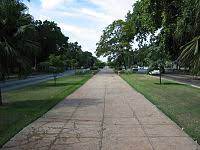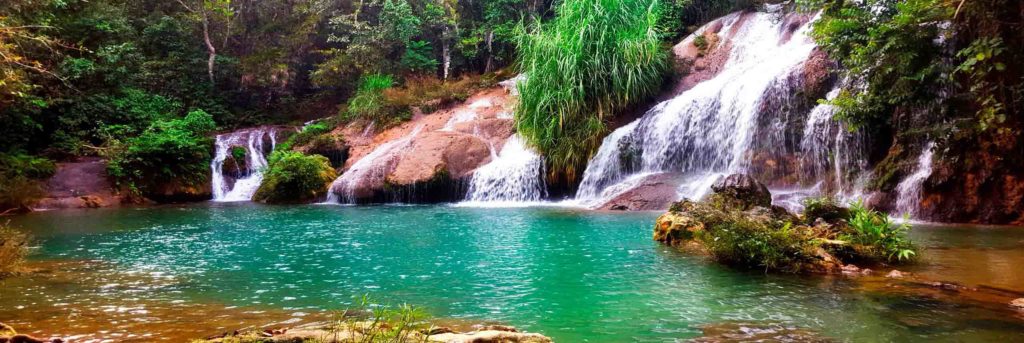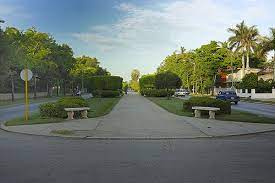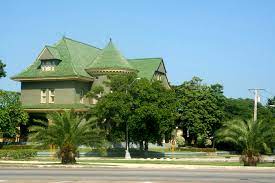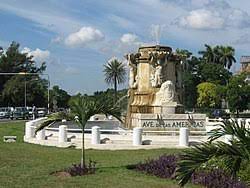INSIDE OUR ISLAND: REMEMBERING “LA QUINTA AVENIDA:(FIFTH AVENUE), LA HAVANA, CUBA. PHOTOS.
Fifth Avenue extends from the tunnel that connects it with Calzada Street, in Vedado, to the Santa Ana River, in the town of Santa Fe. From there it becomes the Pan-American Highway and reaches Mariel. Its layout was decisive for the promotion of the Miramar district and also the Country Club Park and the Playa de Marianao district, which is located between Miramar and El Country.
The wealthiest classes gradually left the oldest part of the Cuban capital and built their mansions and palaces in Cerro and Vedado. Later they would migrate west, beyond the mouth of the Almendares River.
The North American architect John F Duncan, author of the monument to President Grant, in the United States, intervened in the design of the important road, together with Cuban architect Leonardo Morales, a graduate of Columbia University. That is why it is said that Miramar, with its 100 x 200 m rectangular blocks, looks so much like Manhattan.
A HISTORICAL SUMMARY OF “LA QUINTA AVENIDA”
There stands, in its beginning, the Fountain of the Americas. Beyond it is the clock, which is a symbol of the Playa municipality and which, if it worked, would let you hear a sound similar to that of the bells of Big Ben in London. At the height of Calle 42 is La Copa, which gives the area its name, and which was donated by Carlos Miguel de Céspedes in his days as Minister of Public Works under the dictator Gerardo Machado.
Despite its central tree-lined promenade, Fifth Avenue is not a homogeneous road; It changes by sections according to its architecture and the time of construction. Perhaps the section least similar to the rest is the one that mediates between the roundabouts of streets 112 and 120. There, on the south sidewalk, in front of the famous Coney Island Park, there was a group of bars, billiards, and nightclubs such as Panchín, Pompilio, Rumba Palace, El Niche, Choricera, Los Tres Hermanos, Pennsylvania, La Taberna de Pedro … almost all built of wood, with cement floors and zinc roofs, bordering on the marginal, but were visited by all social classes.
Pennsylvania was the scene of the star Tula Montenegro, who sported enormous anatomy. In some of those slums there was Tehran, which had been successful at the Cotton Club on Broadway, along with Duke Ellington and Cab Calloway, while in Choricera, El Niche or Los Tres Hermanos and occasionally at the Rumba Palace Silvano Shueg Hechevarría mounted. , the famous Chory, “the artist who announced himself alone”, is his chilling show with that music that he brought out of kettledrums, pans, and empty bottles.
WHAT REMAINS OF “LA QUINTA AVENIDA”
None of that exists anymore. Many of those establishments either disappeared or became fast food cafes in the 1990s, identified by a strident paint of catchup red and mustard yellow. Says the architect Mario Coyula: “Perhaps looking for an extemporaneous and forced Cuban, or as a reflection of the growing ruralization of the capital, the Rumba Palace has been touched with a steep guano blanket, like a peasant hat.”
Beyond the anecdotal, one day it will be necessary to assess how much the son and the rumba, and the cajón rumba, owe to that school of popular musicians and that essential stage that for Cuban music was “Las Fritas de Marianao”, from the Fifth Avenue.
NUESTRA ISLA POR DENTRO: RECORDANDO A LA QUINTA AVENIDA, LA HABANA, CUBA
La Quinta Avenida se extiende desde el túnel que la conecta con la calle Calzada, del Vedado, hasta el río Santa Ana, en la localidad de Santa Fe. A partir de ahí se convierte en Carretera Panamericana y llega a Mariel. Su trazado resultó decisivo para el fomento del reparto Miramar y también del Country Club Park y del reparto Playa de Marianao, que se ubica entre Miramar y el Country.
Las clases mas pudientes salieron paulatinamente de la parte más vieja de la capital cubana y construyeron sus casonas y palacetes en el Cerro y el Vedado. Más tarde emigrarían hacia el oeste, más allá de la boca del río Almendares.
En el diseño de la importante vía intervino el arquitecto norteamericano John F Duncan, autor del monumento al presidente Grant, en Estados Unidos, junto al arquitecto cubano Leonardo Morales, graduado en la Universidad de Columbia. Por eso se dice que Miramar, con sus manzanas rectangulares de 100 x 200 m, se parece tanto a Manhattan.
UN HISTORICO RESUMEN DE LA “QUINTA AVENIDA”
Alli se erige, en su comienzo, la Fuente de las Américas. Más allá se encuentra el reloj, que es símbolo del municipio Playa y que, si funcionara, dejaría escuchar un sonido similar al de las campanas del Big Ben, de Londres. A la altura de la calle 42 se halla La Copa, que da nombre a la zona, y que fue donada por Carlos Miguel de Céspedes en sus días de ministro de Obras Públicas del dictador Gerardo Machado.
Pese a su paseo central arbolado, la Quinta Avenida no es una vía homogénea; cambia por trechos según su arquitectura y la época de construcción. Quizás el tramo menos parecido al resto es el que media entre las rotondas de las calles 112 y 120. Allí, en la acera sur, frente al famoso Coney Island Park, existía un conjunto de bares, billares y centros nocturnos como Panchín, Pompilio, Rumba Palace, El Niche, Choricera, Los Tres Hermanos, Pennsylvania, La Taberna de Pedro… construidos casi todos de madera, con piso de cemento y techos de zinc y que lindaban con lo marginal, pero que eran visitados por todas las clases sociales.
Pennsylvania era el escenario de la vedette Tula Montenegro, que lucía una anatomía descomunal. En algunos de aquellos tugurios estaba Teherán, que había cosechado éxitos en el Cotton Club, de Broadway, junto a Duke Ellington y Cab Calloway, mientras que en Choricera, El Niche o en Los Tres Hermanos y ocasionalmente en el Rumba Palace montaba Silvano Shueg Hechevarría, el célebre Chory, “el artista que se anunciaba solo”, sus espectáculos escalofriantes con aquella música que sacaba de timbales, sartenes y botellas vacías.
QUE QUEDO DE “LA QUINTA AVENIDA”
Ya nada de eso existe. Desaparecieron muchos de aquellos locales o se convirtieron en los años 90 en cafeterías de comida rápida, identificadas por una estridente pintura de rojo catchup y amarillo mostaza. Dice el arquitecto Mario Coyula: “Quizás buscando una cubanía extemporánea y forzada, o como reflejo de la ruralización creciente de la capital, el Rumba Palace ha sido tocado con una empinada cobija de guano, a manera de sombrero campesino”.
Más allá de lo anecdótico, algún día habrá que valorar cuánto deben el son y la rumba, y la rumba de cajón, a aquella escuela de músicos populares y a ese escenario imprescindible que para la música cubana fueron “Las Fritas de Marianao”, de la Quinta Avenida.
Agencies/ Lecturas/ Ciro Bianchi/ Extractos/ Excerpts/ Internet Photos/ Arnoldo Varona/ www.TheCubanHistory.com
THE CUBAN HISTORY, HOLLYWOOD.




